
OPEN THE DOOR for OPPORTUNITY
Media error: Format(s) not supported or source(s) not found
Download File: https://|!|vcvUploadUrl|!|/2019/11/ezgif.com-crop-2.mp4?_=1
ACROSS THE NATION, MILLIONS OF STUDENTS ARE LOCKED OUT OF LIFESAVING EDUCATIONAL OPPORTUNITIES. THE NUMBER OF STUDENTS ON WAITING LISTS COULD FILL ANOTHER 3,000 CHARTER SCHOOLS NATIONWIDE!
These two simple ideas – that teachers, citizens and parents working together could create better programs and instruction tailored to the needs of kids than large amorphous unaccountable bureaucracies, and that parents are in the best position to decide which diverse offerings would serve their children best – are the foundation for the charter school idea, a progressive 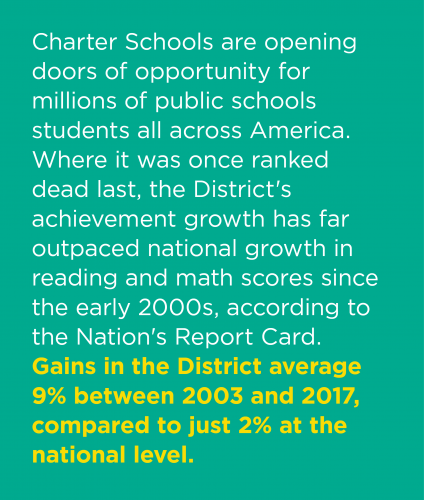 change in education governance that has transformed American public education. Nowhere is this more evident than in our nation’s capital. Just as in several other cities after robust reform, charters have had an impact not only on student performance, but also on the broader economic landscape.
change in education governance that has transformed American public education. Nowhere is this more evident than in our nation’s capital. Just as in several other cities after robust reform, charters have had an impact not only on student performance, but also on the broader economic landscape.
One of the reasons parents and students seek charters is because, when they work, they offer options that are distinct from those found in most traditional school districts. The innovations that charters are best known for are extended school days and years and, in some places, one-to-one tutoring. But charters innovate in many other ways as well: from developing unique approaches to teacher training to pioneering tools for personalized learning. Many innovations that are now accepted as common were born in the charter sector. 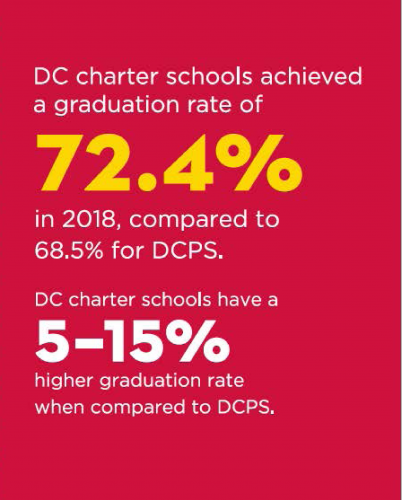 Since the first charter schools were established in the 1990s, the movement has spread to every corner of the country, with concentrated growth in the nation’s largest urban centers. Over time, demand for charters has skyrocketed, despite the push by opponents to overregulate and their distortion of the facts. It’s hard to believe that anyone would not only limit the exceptional choices that mostly working class and low-income families have made to enroll their children in charter schools, but would spend enormous resources and energy fighting their very existence!
Since the first charter schools were established in the 1990s, the movement has spread to every corner of the country, with concentrated growth in the nation’s largest urban centers. Over time, demand for charters has skyrocketed, despite the push by opponents to overregulate and their distortion of the facts. It’s hard to believe that anyone would not only limit the exceptional choices that mostly working class and low-income families have made to enroll their children in charter schools, but would spend enormous resources and energy fighting their very existence!  Proposed policies about accountability and transparency sound sensible, but they are anything but sensible. These policies are being introduced and pushed by groups which derive their power and money from the status quo. Their intent is to slow charter growth, create a gotcha-environment where opponents of charters make nuisance requests to interfere with their main focus – educating students and closing the educational achievement gap between low-income minority students and their more well-off peers. In fact, in Washington, DC, such efforts to interfere in charter school operations, as introduced in the City Council, mirror the recommendations of the nation’s leading teachers union in their “secret” book called National Education Association Action Guide on Charter Schools. Pushing back on such intentionally harmful efforts to tie the hands of charter schools takes away from the effort they would all rather be focused on, and that is helping ensure every child has the right school – for THAT unique and individual student. And right here in our backyard, the Nation’s Capital, we must open the door TO opportunity, expand the ability of all to find a great education, not confine it to traditional public schools that students are required to attend by virtue of their zip code.
Proposed policies about accountability and transparency sound sensible, but they are anything but sensible. These policies are being introduced and pushed by groups which derive their power and money from the status quo. Their intent is to slow charter growth, create a gotcha-environment where opponents of charters make nuisance requests to interfere with their main focus – educating students and closing the educational achievement gap between low-income minority students and their more well-off peers. In fact, in Washington, DC, such efforts to interfere in charter school operations, as introduced in the City Council, mirror the recommendations of the nation’s leading teachers union in their “secret” book called National Education Association Action Guide on Charter Schools. Pushing back on such intentionally harmful efforts to tie the hands of charter schools takes away from the effort they would all rather be focused on, and that is helping ensure every child has the right school – for THAT unique and individual student. And right here in our backyard, the Nation’s Capital, we must open the door TO opportunity, expand the ability of all to find a great education, not confine it to traditional public schools that students are required to attend by virtue of their zip code.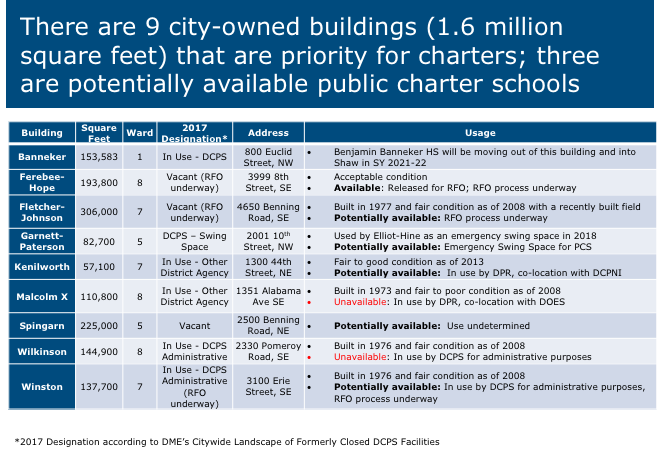
Isn’t it time to put the interests of students first, and choice in the hands of parents?
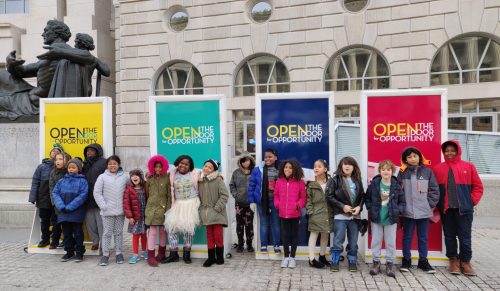
Across Washington, DC, Doors for Opportunity are introducing and educating citizens about the challenges facing District of Columbia charter school kids.
NOVEMBER 14, 2019: Tremendously inspiring D.C. charter movement End the List rally
There may have been a chill in the air but the over 1,300 attendees at the “Open Doors – Unlock Opportunity” in D.C.on November 14th provided plenty of warmth and enthusiasm. A combination call to action for Mayor Bowser to release empty surplus former DCPS buildings for use by public charter schools, celebration of D.C. charter schools and student excellence awards with a prize pool of over $20,000, the event made us thankful that these parents, teachers and students heeded Frederick Douglas’s words that Power concedes nothing without a demand. It never did and it never will. And Demand they did.
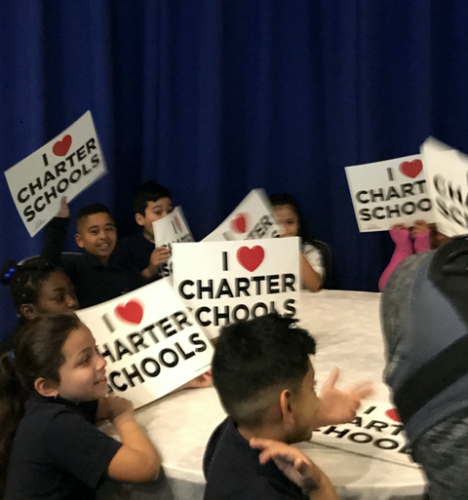
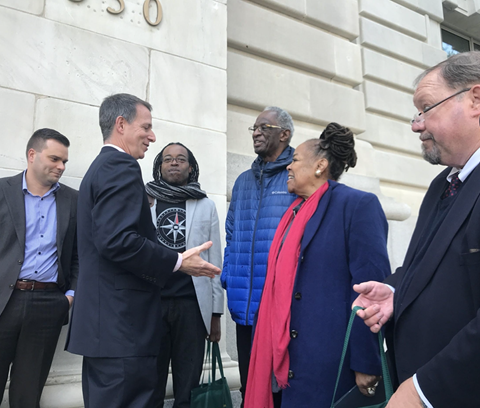
AFTERWARDS… RECOGNIZING TALENT. We’re proud – and a little in awe – of the winners of the Student Achievement Awards at the Open Doors rally. We thank these talented students as well as their teachers and parents: Amari Romney, Richard Wright Public Charter School, for the video “My School is Wonderful”; Cadence Robinson, Center City Public Charter School -Shaw Campus, for the sculpture “We Are Shaw”; Mekedim Gossaye, Yosan Hagos, Edwin Lopez Martinez, Fernando Castillo Diaz and Tewodros Addis of Center City Public Charter School, Brightwood for the rap “What Would I Do If I Did Not Have You?. Congrats also to Statesmen College Preparatory Academy For Boys for having the highest attendance at the event.
________________________________
Provide Excess Space to Public Charter Schools – HillRag | By Ramona Edelin
FIND OUT HOW TO OPEN MORE DOORS:
To Help or Get Involved, contact [email protected]



Facts:
- In 2018, student enrollment in DC’s charter schools reached 44,000; fully 47% of all DC students attend charter schools
- Today, there are more than 7000 charter schools serving 3.2 million children in 44 states and the District of Columbia (May 2019)
- Charter schools across the United States are funded at 64 percent of their district counterparts
- In DC, charter schools significantly outperform DCPS for low income and black students by 20%

|
“The charter school idea is much misunderstood. Its purpose and its raison d’être is often misquoted and misrepresented, sometimes by accident, sometimes intentionally. For those who do not have the luxury of reading all that there is about charters – which could easily fill the Library of Congress; for those who were not there at the beginning, or who were and perhaps forget, here is some context to set the record straight. It starts, like all changes, in the beginning, with the very institution charters were designed to influence – traditional public education.”
|


